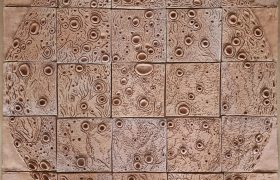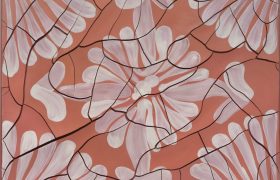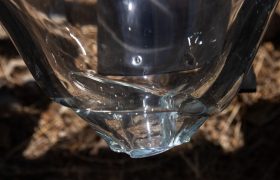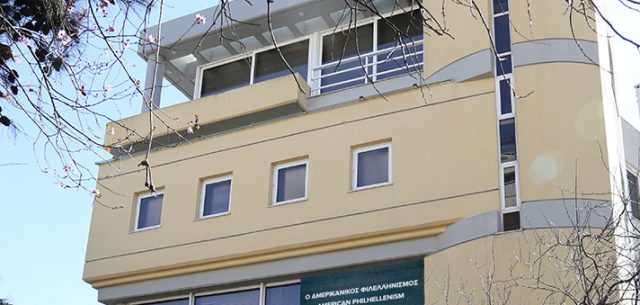Why you need to visit the Ancient Theatre of Thorikos in Lavrion
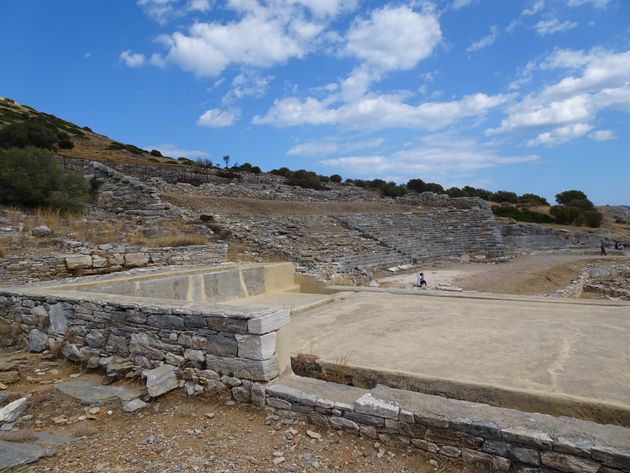
Few visitors deliberately venture to the port town of Lavrion unless they’re catching a ferry – even though it’s a mere 10 km or so further down the road from Cape Sounion. Even fewer make it to the ancient archaeological site of Thorikos – Lavrion’s best-kept secret that’s hiding in plain sight, says John Zervos.
Many visitors to Athens take the obligatory tour down the coast to Cape Sounion to visit the celebrated Temple of Poseidon, perched on the summit of Cape Colona, the southernmost tip of Attica, but few venture about 10 km further down the road to the port town of Lavrion, and even fewer, to the archaeological site Thorikos. According to British writer Osbert Lancaster, ‘Few Greek provincial towns have much claim to be considered beautiful, but Lavrion possesses a peculiar, slightly sinister ugliness on its own with a couple of depressed-looking palms and a yellow mongrel of repulsive appearance’. Still, the Ancient Theatre of Thorikos merits a detour. I often drive to Lavrion, the port of departure for the ferry to the island of Kea. About 3 kilometres before the port, a dilapidated sign reads‘ Thorikos Ancient Theatre’.
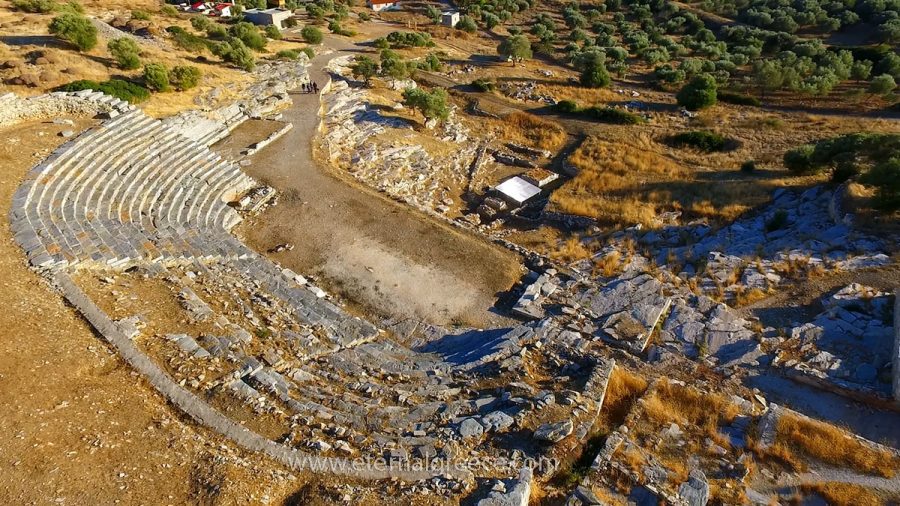 One approaches the almost invisible site on an inclined dirt track called Velatouri Hill that leads to a deserted wooden booth and a newly installed stone pathway that ends in a circular stage area facing a partially restored stone theatre with an elevated layout and an oval orchestra built in the late 600 BCE , the earliest found so far in Greece. The theatre was excavated by the American School of Classical Studies in 1886.
One approaches the almost invisible site on an inclined dirt track called Velatouri Hill that leads to a deserted wooden booth and a newly installed stone pathway that ends in a circular stage area facing a partially restored stone theatre with an elevated layout and an oval orchestra built in the late 600 BCE , the earliest found so far in Greece. The theatre was excavated by the American School of Classical Studies in 1886.
Looking back, one sees a large area of barren metallic rocks that run out into a hard blue sea that stretches the all way to the waterless and uninhabited island of Macronisos. This whole area is referred to as Lavreotiki.
Its bedrock consists of layered marble and mica-schist bearing lead ores rich in silver. Mining of silver-bearing lead ores began on the Velatouri hill in the Final Neolithic or Early Bronze Age, probably around 3200 BCE. From the Middle and Late Helladic periods of the Bronze Age (c. 2000-1050 BC). Thorikos, was inhabited as early as the Neolithic era (4,500 BCE). It evolved into a Mycenaean centre with its intensive mining and metallurgic activity and later became one of the 12 settlements (komai) that were unified by Theseus to establish the glorious Athenian city-state only to be abandoned when destroyed by the Roman general Sulla in 86 BCE.
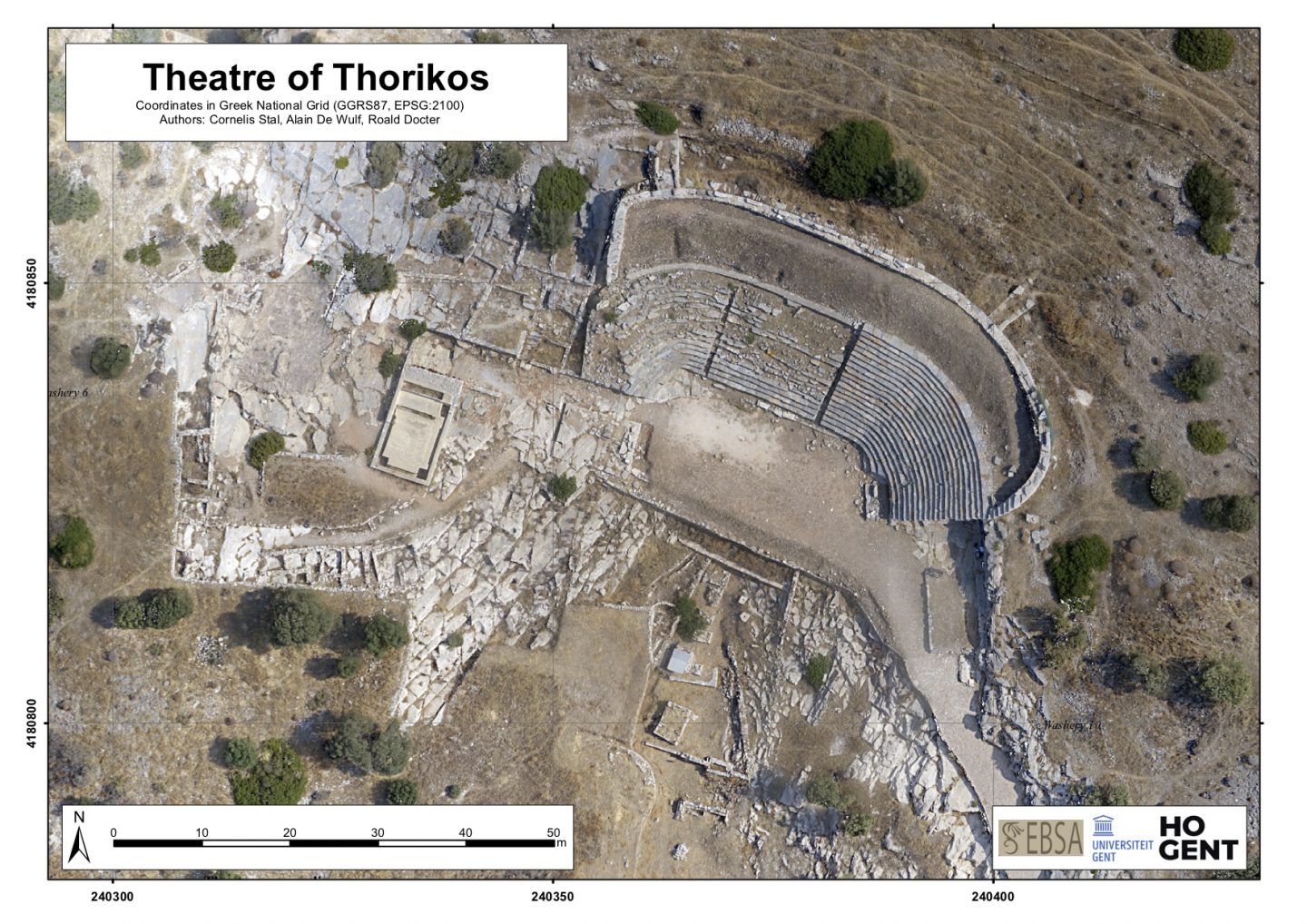
In addition to the theatre, the most important monuments and architectural remains include Early and Middle Helladic Houses (2900-1600) from the Bronze Age settlement that expanded on the top of the hill.
A monumental tholos (vaulted) and chamber tombs of the Mycenaean period (1600-1100. The “Industrial Quarter”. The nucleus of the ancient settlement of Thorikos which lay on the west slope of the Velatouri hill. The excavations revealed the remnants of a densely populated and flourishing city of the 5th and 4th centuries BC, with private houses, stoae, workshops and ore plants.
The “Temple of Demeter and Kore (Daughter)” was a large marble building in the shape of a double stoa and of Doric order, dated to the 5th century BC. The monument was excavated by the Society of Dilettanti in 1817.
Thorikos has mainly associated its history with the Belgian School at Athens. In 1963 it commenced the archaeological exploration on the site which would last for decades and focused on the fortified acropolis, the theatre, the mines and ore plants of the 5th and 4th centuries BC.
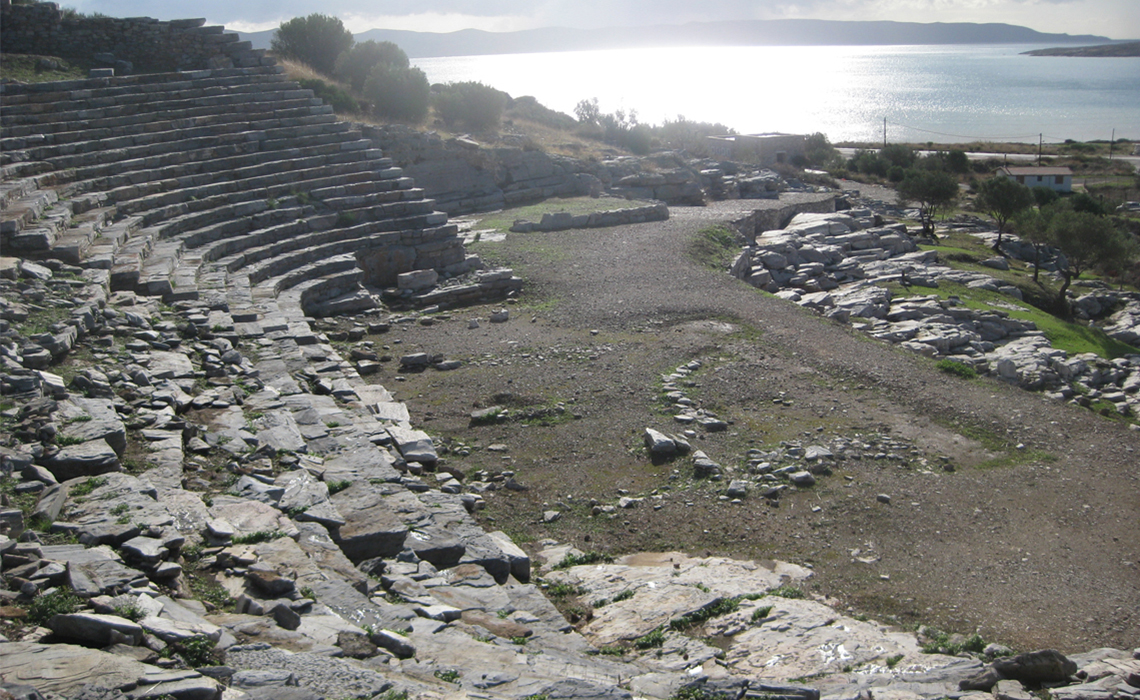
A team from Liège has been investigating the Mycenaean tholos tombs on the Velatouri Hill (16th –13th century BC) and, in 2018, started a new investigation into the contemporary Bronze Age settlement on the acropolis. By means of an intensive survey, Ghent and Utrecht Universities have investigated the complete settlement hill, in the course of which more than 60,000 finds and features were found, spanning the full period from the Final Neolithic (c. 4500-3200 BC) to the Early Modern period. To the casual visitor, the main attraction is the theatre. The rest of the site consists of marble floors, closed-up mine shafts and sections of unearthed marble remnants. Many of the findings are located in a small Archaeological Museum in Lavrion and in the main Archaeological Museum in Athens.
The view is always spectacular and even just a casual walk, scrambling over the stones and steps gives one a ‘feel’ of being part of an ancient village. Lavrion has now spruced up its image with ubiquitous cafés and private yachts gracing the harbour. Many of the older houses have been restored and a large mineral museum has been created.
The Thorikos site is still ‘alone and Pale’y loitering’. A small unchanging archaeological jewel at peace with its presence.
John Zervos is the Director of The Athens Center and author of A Passage to Paradise, Hellenic Sketches of the Mind.

